How Can We Create a Curriculum that is Inclusive of Queer Theory?

Written by George Hayward
(he/him), English Teacher in East London, LGBTQ+ Advocate.
During my time as a student, I often felt a lack of inclusivity in the curriculum I was studying. Reading great classics and beloved page turners such as To Kill A Mockingbird and Lord of the Flies, I found myself wondering why none of these stories were about people like me. When I reached university, I discovered Queer Theory and I was mindblown. Not only were there stories about people like me, but there were academics studying and rereading the texts I grew up with and held dear through a lens of queer understanding. One such text was Robert Louis Stevenson’s The Strange Case of Dr Jekyll and Mr Hyde. I had the opportunity to study these readings during my time at university, so when the opportunity arose to deliver a lecture on it at my school in East London, I was overjoyed. While planning the session, I drew upon the essays and research I had from my undergraduate degree, revisiting the work of prominent theorists such as Elaine Showalter, Judith Butler, Eve Sedgwick and Michel Focault. The most extensive in relation to Jekyll and Hyde being Showalter’s paper Dr Jekyll’s closet.
Queer Theory aims in principle to challenge heteronormativity: the assumption that heterosexuality is the default state of being. It digs into the structures of understanding within art, literature and society and dismantles them. This is an important area of theory as it provides visibility. It allows students of all backgrounds and identities to see themselves in the curriculum they study. It shows them that they are seen and that different people exist. There is a lot of talk about ‘acceptance’ of LGBTQ+ peoples and while acceptance is a great first step, what we need is celebration and understanding. The teaching of Queer Theory and narratives provides this understanding and promotes the celebration of all our students and their identities. It promotes a culture of inclusive allyship and support, where students, staff and their families from all walks of life can lift each other up and be their true authentic selves. All our students deserve to feel they are lifted up in a space where they are safe and important.
The session was received well by staff and students alike. I was able to offer the session twice, firstly to the staff of the English department and secondly to our year 10 students. Staff were engaged with the topic and felt that Queer Theory provides another framework of understanding to utilise in our classrooms. It provides another tool in our analysis toolbox to dig deep into language and encourage our students to be critical thinkers. Similarly, students in my year 10 class that attended the session found the subject refreshing and interesting. I found that while Queer Theory and readings may seem oblique to some, students and staff alike were able to engage with the topic and take away some food for thought. The opportunity to deliver the session was incredibly fulfilling for me on a personal level and it is my true belief that the teaching of these theoretical frameworks is of benefit to every student. I believe it is crucial to foster this culture of inclusivity and celebration for all our learners and I hope that Queer Theory will be a valuable step on this journey.
An African Teacher’s Experience of a British Classroom
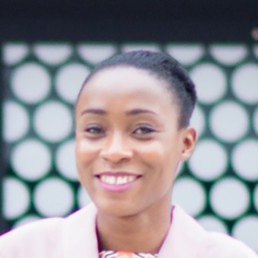
Written by Chinwe Njoku
Qualified teaching professional with a background in Engineering. I have written three books related to the education space (Good Morning Year 11, Raising an ‘A’ Student and From Diapers to Doctorate Dollar-Free).
Try teaching as an African teacher in a non-African country to a mix of students from various backgrounds as different as the colours of a chameleon! This is true hard work! All your paradigms of how children should (not) behave are upended and challenged. Sometimes completely obliterated, you wonder why you lived by those beliefs in the first place. Either culture clash or languages blended.
For example, a student from one of the most popular Asian countries that can also be ‘black’, joins in about halfway through the year and it soon became clear that she and her family must have recently migrated to the UK.
Because, at the start of the next lesson, she walked over to my desk where I was sat and greeted me, “Good morning, Teacher”.
I did not know how to respond as it took me by surprise. Without making eye contact, I just said, “You don’t need to greet me like that every lesson”. I felt embarrassed. Thank God I’m brown skinned or I would have turned red.
Next lesson, I made sure I was at the door welcoming students in to avoid the intense attention of being called Teacher, which I am but dang, just call me “Miss” or “Dr Njoku” like the others.
Second example. A fellow African student was revising after school for her upcoming exams in my classroom, with her friends. But they were chatting quite a bit with this girl being the loudest, most animated and more loquacious of all.
I called her by her last name with the tone of, you need to stop talking and getting on work, or you shall hear from me in a not so fun way! And child, your parents would not be happy either!
Calling children by their last names or first and last names is an African thing. To remind the child of whose they were, and not to bring disgrace to their ancestors and everyone on their family tree?
In response to hearing her last name, she said “Yes, Ma!” And this was not the first time African students have responded to me this way. I have even had, “Yes, Aunty!”, “Yes, mummy!”
Her friends responded with audible arghs, expecting me to caution her against saying that. She quickly caught herself, recanting that she was just used to saying it. I simply raised my eyebrows, shook my head and carried on doing what teachers do after school.
Her default response which caught her off guard, got her to be quiet, but only for a while as nature sometimes trumps nurture.
Last example. One Maths topic I teach KS3 students is Introduction to Data, including the different classifications of data that there are. Data can be classified as either Continuous or Discrete, or as Qualitative or Quantitative. To help students distinguish between the later, I typically go through different contextual examples getting them to decide which class the data type belonged to.
Now because Qualitative and Quantitative sound alike, it was difficult to know which one was being said as an answer. I tried enunciating it for my students so that they could emphasize the ‘li’ and ‘nti’. But try as I may, it seemed not to be working.
Ideally, they would each have mini whiteboards so that they could just show me their answers, saving me the tongue twisting/biting! But not this time for some reason.
Eventually, my tongue could take it no more. Repeatedly asking them to repeat themselves and make a clearer distinction in their pronunciation, I blurted out, “Qua-gini?”
Gini, in my native tongue, Igbo, means ‘what’. By the time I realised I had spoken a different language in an English-based Maths lesson in a British school, it was too late. I could not take back my words.
My students who looked at me confused. But since no one else knew what just happened, I kept a poker face, swiftly correcting it to, “Qua-what?”
All was calm. Teaching and learning resumed. Except in my mind, of course, as I tried not to laugh at my blunder.
Then it happened again in a different lesson. I was in the throes of solving one question after the other on the board and taking requests from the audience – my Year 11 students. Then, someone called out, “Question 36, Miss!”
To gain time to figure out the solution to the problem, I responded as I walked to the board, “Thirty-gini?”
From the eyes at the back of my head that all teachers have, I could ‘see’ the two students who had Igbo heritage chuckling to themselves in mutual knowing of what they just heard.
Somebody, help!
As Educators, What Do We Owe to Our Children?
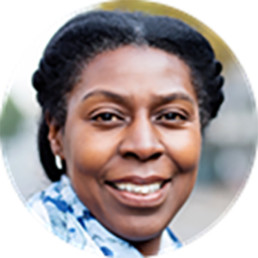
Written by Rosie Peters
Rosie Peters has been in education for over 20 years and is currently working as a Co-Head of School. She is passionate about improving children’s life chances and strongly believes in the power of mentoring and representation.
As educators, what do we owe to our children? Surely it should be an education where each and every child feels represented within the education system and the curriculum.
An early-years setting that says welcome, I hear you and I see you, instantly communicates to the child that they belong. In turn the child recognises and sees familiarity within the physical environment, the faces they encounter, the words that they hear.
For a child that has little English, a simple hello in their first language can make a world of difference. Books opened and read aloud, bridge reality with the imaginary with ease because someone has taken the time to check there is true representation of the children entrusted to them as they embark on what should be a wonderful adventure of education, full of excitement and discovery.
We want all our young people, regardless of colour, class religion, gender or ability to experience a shaping of belonging and identity that is positive, clear and authentic. We are responsible for shaping their views and attitudes of self and others.
Pupils should be made aware of the true contributions made by their ancestors and the ancestors of their diverse peers.
Starting with a Primary History curriculum that gives the full story by bringing back the erased and forgotten: the Aurelian Moors who were Roman soldiers based in Britain; the Ivory Bangled Lady; Septimius Severus a Roman Emperor. ‘We can be certain that people from Africa lived here more than 1,700 years ago.’ (Black and British, a Short Essential History; David Olusoga 2020.)
In history wonderful websites such as ‘Another History is Possible’ or ‘Meanwhile Elsewhere’, gives insight to other equally important global events that took place at the same time as the eras covered in the national curriculum.
A curriculum that allows different perspectives to be taught – from the point of view of, for example, race, gender, class, religion, disability and age, would give a strong message that diversity is not only accepted but essential.
A curriculum that develops and champions critical thinkers who are able to question, to ask why, is essential. Why, for example, during the VE Day celebrations in the summer of 2020 Black and Asians soldiers were barely mentioned. Why, in certain professions, there is little or no representation from non-white communities.
Let’s empower young people by ensuring that the curriculum and experiences they encounter are reflected through the role models we choose, the places we focus on and the cultural connections we celebrate. There is no subject in which diversity and inclusion cannot be embedded and made the norm. With a bit of time and effort it is amazing what can be achieved.
Educators need to be supported and provided with CPD to enable them to become ‘racially literate’ and able to talk openly about racism; in other, words not shy away from uncomfortable discussions. They need to be aware that terminology is forever changing and that it is better to ask someone what they prefer to be called: Black, Black British, Black Caribbean, Roma or Romani … rather than avoid it.
Teachers that go all out to make sure that someone’s name is pronounced correctly show children that their name is important; it is part of their history and culture. ‘It is not the first mispronunciation that stays with the student, it is the failure to learn how the name is pronounced and then the continued incorrect pronunciation on the second, third, fourth attempt. The unfortunate consequence, witnessed first-hand, is that students with names from different backgrounds start to hide their names. Their pride in their own heritage is eroded. (Diversity in School, Bennie Kara 2021)
We all have the responsibility to engineer change. Lack of knowledge of different people causes a lack of trust, fear, conflict and animosity. Educators need to be instrumental in changing society in a meaningful way.
The pandemic has highlighted the inequalities that exist in our society and the mistrust that some communities have in our institutions such as the justice system, the police and the medical profession. This is built on decades of negative experiences and unfair treatment endured by marginalised communities. One only has to look at key data sighted in the Office of National Statistics 2017/18:
- Fifty-five percent of Black Caribbean pupils achieved the expected standard in reading, writing & maths (The lowest percentage out of all ethnic groups after White Irish Traveller and Gypsy Roma pupils.)
- Three times more likely to be permanently excluded than their white peers.
- Forty-five percent of Black Caribbean live in rented social housing, compared with 16% White British (2016/17)
- Black Caribbean women are five times more likely to die in childbirth than their British counterparts.
This lack of trust can have a devastating impact on minority groups. A prime example can be seen in the low rate of uptake for the COVID-19 vaccine amongst the Black and Asian communities. This surely has to change.
We need to come together and work for the common good. It should not be the responsibility of one community, usually the community being most affected. It has to be the responsibility of everyone; the majority: white allies, working alongside the minority.
Wouldn’t it be wonderful to produce children who have a full sense of belonging; knowing where they have come from and where they are going and, in equal measure, hold the same knowledge of their diverse peers.
Imagine if this were the reality, there would be less racism, prejudice, unconscious bias and the inequalities we see today.
Agency would be for all and not the chosen.
The decision makers of tomorrow would mirror the richness of society’s diversity and therefore decisions on a local and global scale would recognise and address inequality and bring equity where required.
Some educators have already started this journey; a journey we should all embrace in order to bring into being a more equal society for our children, the leaders of tomorrow.
The green shoots of change can already be seen. Let’s hope they fully blossom.
Teaching is a great profession especially when we recognise that education is a powerful vehicle for creating better human beings.
How to Communicate Inclusively
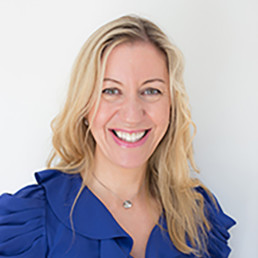
Written by Karen Dempster
Written with Justin Robbins. Lifetime communication experts, founders of Fit2Communicate and Fellows of the Institute of Internal Communications. Authors of How to Build Communication Success in Your School: A Guide for School Leaders.
Have you ever been in a conversation when …?
- You’ve not felt you had a voice or even if you’ve spoken you’ve not felt heard?
- The language or jargon being used has made you feel like an outsider or confused?
- Worse still the language used has been insensitive and upsetting simply because the other person did not put themselves in your shoes?
You may even have done this to someone else, without even realising. However, these common experiences are simply not inclusive. And they are absolutely avoidable if you consider these points when you communicate.
Listen first to understand
Firstly, it’s important to recognise that you listen through filters, which shape what you hear. They are built up through life-long conditioning and create bias. It’s important to practice regular self-reflection and question your bias, supported through on-going education.
In addition, there are different levels of listening. Some we all do instinctively, for example when we jump to conclusions, are impatient to share our views or listen to surface details.
Inclusive listening takes a little more work but will take your listening to another level. For example, it requires you to acknowledge there are two conversations going on at any one time. The first being what you hear from the person in the conversation, the second is the chatter that naturally happens in your head. To listen fully, consider asking yourself the following questions internally:
- Do I fully understand what they are saying?
- What can I sense from their energy, body language and facial expressions?
- Am I showing them that I am listening?
- What could I ask to help me understand better?
Now consider asking questions as part of your conversation with the other person to better understand their perspective, such as:
- I heard you say … is that correct?
- Can you give me an example to help me to understand better?
- Can you tell me more about that?
- Can I do anything to help?
This will help you to stay present and fully listen. As a result, people will see that you are focused on them, what they are saying and that you value their opinion and ideas.
Watch your words
The words you choose clearly have a huge impact on how inclusively you communicate. The wrong, insensitive words can have catastrophic effects – often simply by not thinking before speaking.
It’s sometimes tricky to know what words to use when is comes to protected characteristics. However, through ongoing education and talking with the right people and groups, you can stay respectful and inclusive.
Also, consider you can be more inclusive by using words that mean something to those around you. Certain phrases or words that you use quite naturally with friends or colleagues, may not be understood by others. For example, those from a certain part of the country may talk about ‘going around the Wrekin’. The same applies for jargon, acronyms and highly technical language.
It may seem innocent enough but speaking in words that mean nothing to the person you are communicating with can at best confuse them or worst annoy and alienate them.
Recognise that people communicate differently
Without recognising that people communicate differently based on their behavioural and communication preferences, communication diversity cannot be considered. Psychologist, William Moulton Marston, created a personality profiling tool called DISC, to understand these preferences.
Simply speaking, people communicate based on four preferences that are explained below. Everyone is a mixture of these, they are situation dependent, but will have a stronger preference for one type. Which one do you believe is closest to you?
- Are you outspoken (extroverted) with a focus on getting things done? Do people sometimes consider you to be direct, blunt, decisive, competitive, assertive and often impatient? If so, you may have a red communication preference.
- Are you outspoken (extroverted) with a focus on people? Are you considered social, confident, optimistic, inspiring, collaborative and often emotional? You may have a yellow communication preference.
- Are you reflective (introverted) with a focus on people? Are you considered to be calm, co-operative, patient, good listeners, deliberate and often stubborn? You may have a green communication preference.
- Are you reflective (introverted) with a focus on getting things done? Are you considered to be independent, systematic, diplomatic, reflective and often detail focused? You may have a blue communication preference.
Each colour has a different filter through which they communicate. If you are red speaking with someone who is green (who are opposites), it could literally be like talking to someone in a different language.
However, there are simple things you can do to spot preferences and adapt your style to communicate inclusively. It takes practice at first but it’s worth the effort to enhance your communication and relationships.
Find out more about your DISC preference (and those of others) here [What’s your communication colour? (fit2communicate.com)].
Menopause in Education - The Impact on the Teaching Profession

Written by Sharon MacArthur
Owner of Red Handbag. She works internationally with leaders in business, helping them to develop their leadership confidence though more effective communication strategies.
According to recent government figures, three quarters of teachers are women, so why is support for those in the profession who are going through the menopause glaringly lacking?
The average age that a woman reaches menopause is 51, but symptoms can start much earlier. Women over 50 are also the fastest growing workplace demographic and many women working in education are in senior leadership positions by this stage in their careers.
While all women go through menopause, some will have a more difficult time of it because of the nature of their job role. Teaching is no exception.
How will a female teacher suffering from menopause-related anxiety cope in such a physically and mentally-demanding school, college, or university environment?
How will menopause-related fatigue and problems concentrating fare against dealing with problem pupils, excessive workloads, and strict deadlines?
What about heavy and unpredictable periods? Hot flushes? What if you can’t just up and leave the classroom if you need to?
Some women’s menopause symptoms are so severe that they either need time off from work or questions get asked about their capability to do their job.
Sadly, support from managers, even female ones, is often not forthcoming.
The result is many wonderful educators feel they have no choice but to leave their role, which is very sad, considering that getting there is the culmination of a lifetime’s work for many women in the profession.
Can the teaching profession afford to lose such highly-skilled and valuable teaching talent? That’s what could happen if schools, colleges, and universities don’t become more menopause friendly.
What can be done to better support female educators who are going through menopause?
There’s no getting away from it, teaching is a physically, mentally, and emotionally demanding job at the best of times, so when it comes to menopause, we can’t just sweep it under the rug.
When I deliver menopause training to an organisation, I always make a point of saying that menopause should be business as usual. While there are some really positive signs that it’s being talked about more openly, it’s still a bit of a workplace taboo.
Women are still suffering in silence, and considering leaving their jobs, which is bad news for a profession like teaching which struggles to recruit and retain talented staff.
So what can be done?
- The first step is talk about it. Raise awareness about menopause, bust the myths, and make it everybody’s business. The goal should be to create a menopause friendly workplace where women feel comfortable talking about how it’s affecting them and where they are able to ask for advice and support.
- If your workplace doesn’t have a comprehensive menopause policy, put one in place that will meet the needs of women going through menopause as well as providing straightforward guidance for their line managers.
- Speaking of policies, make sure your sickness absence monitoring policies and arrangements don’t lead to the detrimental treatment of women who need time off for menopause-related reasons. Similarly, bear this in mind where absence and a symptom-related decline in performance can affect things like pay progression.
- Improve awareness of menopause across all levels of the workforce, particularly at leadership level.
- Make reasonable adjustments to support women going through menopause.
Some reasonable adjustments your organisation could and should make:
- Allowing toilet breaks during lessons where necessary.
- Providing sanitary products in staff toilets.
- Providing a place to shower and change if necessary.
- Considering flexible working requests such as reducing hours or allowing some work to be done from home to help women manage their symptoms.
- Providing access to cold water and allowing employees to control the temperature of their working environment if possible.
Menopause in the national curriculum
The government has added menopause as a topic to be covered on the sex education curriculum in secondary schools. Surely schools that are menopause aware and menopause friendly will be better placed to give pupils a broader and more enlightened view of the topic?
And it all needs to begin with how they support their own staff.
My mission
Raising awareness about the menopause among people and employers is all about education and making it comfortable and acceptable for people to speak about it. Menopause is not a condition to be treated and cured, it’s a normal stage of life that every woman goes through. Helping people to realise this is my mission.
My training events are aimed at educating HR professionals, managers, and workers about the menopause in a fun, engaging, and informative way.
If you’d like to find out more, contact me at sharon@missmenopause.co.uk
You can also join my Facebook group or my Facebook and Twitter campaign
Claim the Room
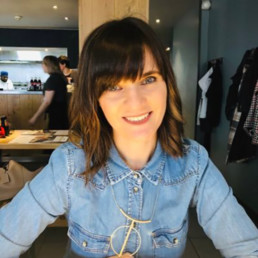
Written by Annemarie Williams
Executive Head Teacher of Humberstone Infant Academy and Humberstone Junior Academy, where she has been Headteacher / Executive Head Teacher for 12 years.
I’m going to start this with a disclaimer. Because I feel like right now there is a lot of highly expressed emotions and publicity around the issues I’m writing about. Many people will have an opinion and this is mine.
Last weekend I was proud to be part of the online celebrations for International Women’s Day – last night I lit a candle for the horrific crimes against Sarah Everard and cried. I woke up to some of the most distressing and brutal photographs from the vigil that was held in her name. In between this, I watched a woman admit to an international TV audience that she felt so overwhelmed by her treatment in the media and by an institution, that she had thought about taking her own life. I have spoken to friends, family, colleagues and the overwhelming feelings are the same. Women are expressing their sadness and anger and the sense of powerlessness that they have felt in so many of these situations. The lack of power in preventing crimes like these, the lack of power in challenging the institutions responsible and the lack of power in affecting meaningful change.
I’m a mother, a daughter, a niece, an auntie, a best friend, a leader and proud to have been a regional leader within the #WomenEd community for 5 years. I’ve spoken to women of all ages and stages in life and each and everyone of them has a story about being followed home in the dark, shouted at in the street, groped in nightclubs, patronised and interrupted at work and called names on social media because of their body shape. It is heartbreaking.
I do not attempt to speak for all women but it seems to me that many women who were taught to take a seat at the table…now realise that they will always be sitting on the chair with shorter legs because equality and equity are not the same thing. It’s not enough to have a seat at the table if you don’t feel that your voice is heard. And really to be genuinely listened to and heard is what many women are asking for. In their statements for the media today, the spokesperson for Reclaim the Streets spoke repeatedly about women wanting to be heard and about the need for constructive discussion and dialogue.
Brene Brown speaks of the difference between “power over” and “power with” and this is the bones of what many women experience on a daily basis. “Power with” can only happen if the people at the table acknowledge their position of privilege and actively and deliberately seek to change the status quo. In this case that means men doing more to address the issues at hand here. In my life I am fortunate to have some truly wonderful, brilliant, enlightened and courageous men who have absolutely and sensitively tried to conduct themselves like the brothers and allies women need. But there still feels like there is more to do. I know that these are the men who would intervene in the case of a woman being harassed in the street, or call out an inappropriate joke in the office or challenge the use of sexist language in the locker room. But there’s more subtle forces at work than this. It’s more than calling out bad behaviour – we need men to actively demand better behaviour and not because they are husbands, fathers and brothers, but because it is the right thing to do if we believe in a fair and equal society.
This is challenging and requires an active and deliberate awareness. It is almost asking too much – to feel the day to day experience of being a woman. The theme for International Women’s Day this year is #choosetochallenge. Women all over the world are providing that challenge but it is not enough if men do not do the same. So what could this proactive stance look and sound like?
- Questioning the diversity of a panel that you are asked to speak on
- Asking what the diversity and inclusion policy is where you work
- Offering to give up your space at an event for someone who would benefit from the opportunity
- Initiating open conversations with women about their experiences of everyday sexism and being prepared for the fact that this might feel uncomfortable
- Insisting that recruitment is transparent and that there are no secret backdoors to get that seat at the table
- Providing opportunities for women to have open discussion, forum groups and other ways of giving anonymous feedback
If we want things to change then there needs to be an acknowledgement that this is an active and proactive process and if you are not willing to help find the solution, then you are probably part of the problem.
Culture Vs Performance Scrutiny? Which is most important for a governing board to get right to fulfil its strategic role on race?
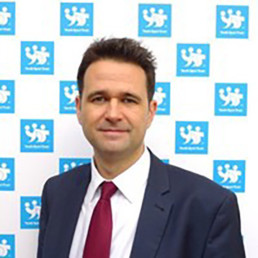
Written by Dominic Judge
Director of Governance Programmes at Inspiring Governance
The recent Diverse Educators series on Diverse Governance has got me thinking. The recurring theme is that developing the right culture in your governing board is the most critical step to getting equality and diversity right in your school. If you like… ‘culture eats strategy for breakfast’. But are there other ways of tackling racial inequality?
I’ve been a continuously serving governor for the last 15 years in a variety of school and catchment contexts. I’ve also been a Diversity Training Manager in the police after the tragic murder of Stephen Lawrence and worked at the National College for Teaching and Leadership, not least leading a range of work to diversify senior school leadership.
From what I’ve seen in all these contexts, culture is critical in successfully addressing racial inequality. A culture of leadership, personal commitment, brave discussion and a collective willing of boards and decision makers to educate and self-examine themselves in order to move forward.
However, my experience has shown me that it is also about fundamentally ensuring race equality is elevated front and centre of organisational performance too. This means that race equality is on agendas, data is sought and scrutinised, actions are taken (and funded), and outcomes/ performance are scrutinised and challenged as forensically as any other element of performance. A good culture means this is easier to do but it can be done as the right culture is being developed.
In one of my roles I remember taking on a major programme to develop a pipeline of headteachers. One of this programme’s sub projects (the ‘diversity project’) was unfunded and described to me as an ‘influencing project’. Not surprisingly it was not under the same level of scrutiny as the others and consequently not achieving as much as them.
This is exactly my point; we won’t make the progress we need to without the high scrutiny and funding of action that goes along with other areas of organisational/ school performance. Within months I ensured it was six-figure funded and scrutinised for its’ performance and progress by the overseeing programme governance board as keenly (if not more) as any other project we were undertaking.
So, if tackling race inequality in schools is to be scrutinised as forensically as any other area of school performance, what are some of the questions governing boards need to be asking themselves?…
7 main areas to consider:
- Pupil achievement/ attainment – Does the governing board regularly interrogate the school’s attainment data against ethnic category data. Are there markedly different SATs/ GCSE/ A-Level outcomes for different student groups? Why is this? What are we doing about it? How is the current Covid exam grading approach playing out across our diverse students?
- Racism – My own experience of governance tells me that reported racist incidents to governing boards are very low, but a TES pupil survey last spring reported a third of pupils had seen/ heard racism in their school. So, behind the monitoring of RIs, how are governors assuring themselves that their school is tackling racism and educating students about it? Do all their students feel included, protected, and supported to achieve their academic best?
- Exclusions and behaviour The Timpson Review rightly shone the spotlight on pupil exclusions and if you have ever sat on an exclusion panel you will know the magnitude of the decision you are being asked to make. But as a collective board, governors need to monitor exclusions (and for that matter general behaviour sanctions) by ethnic category data – what is the pattern showing? how do they have safeguards/ checks and balances in place to understand and counter any uneven outcomes?
- School workforce data and approaches – Are governing boards reviewing their own composition? Are they reviewing the make-up of their SLT, their teaching staff, their ancillary staff? This is not advocating a call for positive discrimination but ensuring that the governing board is asking questions about the strategic approach to recruitment and development in the school.
- Broad and balanced curriculum – Governing boards have a strategic role to ensure the school is delivering a broad and balanced curriculum. So, are governors confident the school is offering a balanced curriculum, relatable and accessible to all students from all backgrounds? If an academy, how are they ensuring their curriculum freedoms motivate all pupil groups in the school?
- Policies (e.g. uniform) – How are maintained governing boards and trusts reviewing and signing off policies? Are these policies unwittingly leading to indirect discrimination in their outcomes and unevenly associated disciplinary action because of these – e.g. Black hairstyles
- Destination data – Governors of secondary schools should be strategically scrutinising the destination data from their schools. Where are their students from different race and ethnic backgrounds going after they leave school? What does the data say on those progressing to further or higher education, employment, what does our NEET data tell us?
Good schools and governing boards will already do much of the above and more. They will have developed their culture and have clarity for the school’s vision and ethos on race. But if some schools are working hard to develop their culture then it’s helpful to remember that part of the governing boards’ strategic role on race is to hold the school executive to account for the educational performance of all its pupils. For success and change, culture and performance scrutiny need to go hand in hand.
Engage, Educate, Empower Mantras for Inclusive Leadership
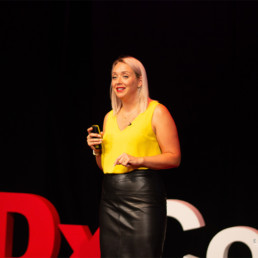
Written by Hannah Cotton
Founding director of Inclusive Leadership firm, EquALLIES and promotes global inclusion on Twitter under #FFBInclusion.
I’ll confess, I’m getting a little sick of the three word mantras. I’ve come to liken them to vacuous cross-party political promises and safety-critical health advice alike. They’ve been over-used, over-simplified and under-estimate the intelligence of many to accommodate more.
But I’m also a realist, relying heavily on my analytical skills to draw conclusions that support facts. So, somewhat reluctantly, I acknowledge that three word mantras are highly effective at delivering a message. They are effective at activating people to change.
All else being equal, what’s required for change?
Our need to learn how to change has never been greater. Be it covid, Brexit, inequalities and social injustice or climate change, we must all grapple with the “new normal’; and that means change. Maybe it’s just at the fore of our thoughts as we find this “new normal” may be so significantly removed from the old.
Change is constant. Risks change, rules change. Priorities, processes and systems change. Change is not tied to global pandemics or social injustices. None of it needs a rising of the people, form T216 or social media. If the driver of a deadly efficient biological virus has taught us anything, it surely must be that.
Many I move amongst embrace change lovingly; change is opportunity, growth and progress. Through discussion, I’ve found most with this perspective draw from negative experiences of a need to change to reach this conclusion. Many have grown through change linked to pain; loss of a family member, loss of a job, loss of safety or health, or recovery from addiction.
Experience of the process builds confidence in change management. With knowledge and understanding, we can lead others with positivity to not just face change, but also to identify opportunities for change, and how to promote it. The drive to build on past improvements spurs the next, and shared enthusiasm facilitates taking others on the same journey.
There are also those that I recognise approaching change with a different mindset; when one equates change with fears of the unknown and loss of a comfort blanket.
However, let me clearly state at this point, there is a huge difference in those who require routine and consistency and those resisting change. Neurodiversity is not a problem to be moulded into homogenous thinking. Neurodiversity is a positive example of ‘different’ that we require change to embrace.
So, with over 100 years of collective experience in cross-industry leadership, psychology, business and cultural expertise, EquALLIES have defined this three word mantra to effectively manage meaningful, inclusive change. We’ve worked hard to condense our knowledge to provide the skills, learning, experiences and opportunities to lead oneself, and others, progressing the individual, their workplaces and communities.
We go beyond the protected characteristics to embrace all stakeholders, including socio-economic, social capital and geographic inequalities. After all, diversity is nothing without inclusion, and inclusion is impossible when it excludes.
Engage: Get Ready To Work
Engagement combines the need to inspire someone to do something. EquALLIES understands that means leading ourselves to change and also leading others.
No-one is absolved from action. Ask yourself some questions;
- Why? Define your purpose. Understanding the reasons for change will be key to keep you focused and motivated when times are tough.
- What? Define your goals, plan a course of action, understanding risks and measurable outcomes. This will keep you on track for delivery.
- How? Outline the resources you will require to achieve your goals. Knowing your strengths and your barriers to achievement will help you source the services, products and collaborators for success.
For example, in the context of school, where the goal is learning, we have two cogs; pupil and teacher. To engage, the pupil may prepare for the year with a new uniform and pencil case, but without corresponding resources from the teacher, their shared goals will be destined to fail. There is a requirement for individuals to prepare for cohesion and collaboration to address the issue at hand.
Educate: Do the Work!
Once you have engaged yourself, employed the resources you need to move forward towards a shared goal you must get ready to grow. Becoming mindful of yourself, knowing what growth feels like, how you address challenging situations and how to approach new ideas will be key. When you understand your own learning style, you can then do the work to improve your knowledge. This is when education yourself leads to educating others.
Empower: Get to Work!
Once the individual and collective are engaged and educated, it’s time to act.
Understanding barriers to action will include the process of liberating yourself from inaction, apathy or denial. Empowerment gives you the tools to challenge yourself, and others from issues that may be deeply ingrained, have formed bad habits and institutionalised ways of thinking. Enabling you to remove these barriers and act on behalf of yourself, and others, can safely be used towards realising your individual and collective goals.
Conclusion
For one to change, one must be able. Having the confidence to be you and to know your authentic brand of leadership is important. Having a network to support you, to inspire, to share successes with and to draw from when further strengths are required is important. Having a safe space and opportunity to practice your skills and reflect on your learning are important.
Mantras may not always hold the detail we need to effect change. However, if they grab your attention and engage the individual enough to learn how to act on them, the journey transcends the need to re-skill in future. By focusing on understanding self AND others, the fear of change, of loss and exclusion are replaced with practicing what we so often preach.
Individually important but collectively successful, Engage > Educate > Empower is the three word mantra embracing leadership, diversity and inclusion.
When You’re Accustomed to Privilege, Equality Feels Like Oppression
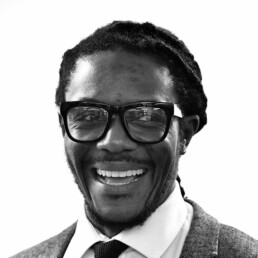
Written by Wayne Reid
Professional Officer & Social Worker
Black History Month has passed but we must not stop ringing the alarm on racism in social work.
The level of inaction from many within the profession’s establishment is both deafening and revealing. To quote US novelist and activist James Baldwin: “I can’t believe what you say, because I see what you [don’t] do.”
Being ‘let in’
I write this article from both personal and professional perspectives. I do not speak on behalf of all Black and ethnic minority people or social workers as we are not a homogenous group. Also, I refuse to be the tokenistic ‘Black voice’ of BASW. I’m one of many Black voices in the profession. I realise that I’ve been ‘let in’ (to some extent) to express my views because, to quote Black historian and TV presenter David Olusoga, I “won’t scare the horses”: I am supposedly well-spoken and middle-class or so I’ve been told.
For the record, I’m not aspiring to be a ‘nice guy’ when it comes to combating oppressive regimes and systems. ‘Niceness’ is often weaponised against people of colour. My motivation is not for career ambition or financial gain. It’s for the cause, not applause – and the cause is Black Lives Matter.
My narrative is based on my lived experiences and those of other people who are routinely judged on the basis of their skin colour.
Minimisation Street
The prevalence of anti-black racism and the stealthy manoeuvres to gloss over our contributions and downplay our legacies is discombobulating. Some of us learn to live with the burden of our exposure in white spaces, even though it punctuates the rhythm of our everyday lives, and some do not.
Most Black and ethnic minority people recognise early on that we are forced to try harder and tolerate multi-layered oppression for our endeavours and to be recognised. This is evidenced by the tiny number of Black people honoured with a statue or trophy name; the groundswell of racism aimed at Marcus Rashford for campaigning to provide meals for disadvantaged children and the avalanche of complaints and relentless racism targeted at Ashley Banjo for leading a BLM-themed dance.
Interestingly, some people have likened Black actor John Boyega being cut out of the Chinese launch of a perfume advert to a photo tweeted from a Guardian Social Care Lives 2020 event in which I was cut out as a panelist.
People must make their own minds up about any similarities. The reality is the list of minimisations and omissions (accidental or otherwise) for me and other Black people is endless and normalised.
Critics argue that politics is for politicians and Rashford should ‘stick to football’ and Banjo should ‘stick to dancing’. These modern-day revolutionaries are accused of ‘playing the race card’ by some. Reducing our life experiences to a game of cards serves only to undermine the importance of what we say.
This minimisation strategy disturbingly correlates with attempts to de-politicise social work policy, practice and education. Have social workers been ‘dumbed-down’ to simply become agents of the state? This debate has continued for decades to a point where social workers are now regarded by some as agents of social control. Being politically and socially aware is essential to promote social work values and ethics – otherwise, surely, we are just automated robots.
To quote Black activist Guilaine Kinouani: “Any attempt at portraying [social work] (or any scholarly discipline) as an apolitical, decontexualisable and ‘neutral’ field of knowledge production which can operate outside of the realm of politics and ideology is not only ill-informed, it is naïve.”
Does the automation of tasks that social work has become in some places stifle this type of critical and free thinking? I’d argue it does and that there has been a silent (but deliberate) shift to devoid social workers of their political nous and social activism.
I’m not talking party politics here, but all the local and national activities through which people make, preserve and amend the written and unwritten rules under which we all live. The activities associated with making decisions for groups, power relations between individuals and the distribution of resources or elevated status by central government.
From this perspective, politics is inextricably linked to the phenomena of conflict, cooperation, fairness, social justice and human rights.
It’s a bad state of affairs when those in power use the media to corrupt our societal world view, so that to be ‘woke’ or to ‘do-good’ is considered something to sneer at. Accusations of ‘virtue signalling’ and ‘victimhood’ do not evoke compassion or humanity, but provide an insightful measure of their sensibilities.
For those politicians of colour who deny ‘white privilege’ and denounce critical race theory, ‘Skin folk ain’t always kinfolk’ is an apt mantra from my upbringing.
Nowadays, I take the view that some white wolves exist in Black sheep’s clothing. Let’s be clear, these people are cleverly disguised gatekeepers and handlers. White supremacy is often more palatable when it is communicated by people from Black and ethnic minority backgrounds. Of course, the incentives of money and power are enough to seduce most human beings regardless of their ethnic background.
I’m Black all year round not just for one month
Black History Month (BHM) is not really a celebration of Black history. It’s more a filtered window of remembrance to pacify us. If those in power were serious about Black history, they would integrate it into all aspects of mainstream education.
There is a very real danger of BHM, the BLM movement and anti-racism all being caricatured and side-tracked by the insidious multi-dimensional forces that exist to suffocate them. Namely, different manifestations of white supremacy and institutional ‘whiteness’.
This is why we have ‘bigger fish to fry’ than Rule Britannia or whether Adele should have her hair in Bantu knots! Examples of this suffocation in social work include: racial harassment, gaslighting, and marginalisation. When white people attempt to police the dialogue and language of Black and ethnic minority people (based on what they view as palatable), this is how the ‘psychosis of whiteness‘ is socialised and teaches perceived entitlement and superiority over Black people. An example of this can be seen in the responses to rap music and Black culture.
Also, there are attempts to derail, discredit and devalue Black lives through social media, including through auto-generated ‘bots’ which is deeply sinister. The mission to educate, equip and empower hearts and minds on anti-racism has never felt more urgent in my lifetime.
The mainstream media and politicians think BLM is old news. However, since the resurgence of the BLM movement, BASW has been at the forefront of anti-racist social work activism. BASW England has championed anti-racism in social work on a scale unrivalled by any other organisation in the profession.
As an organisation, we also realise that we are not immune to the perils of white supremacy and institutional ‘whiteness’. However, BASW has shown a willingness to address and tackle these issues internally and in the profession more broadly.
Cringe position statements, feeble blogs and noteworthy silences
Since my last article in Community Care on promoting anti-racism in social work, there have been some decent position statements from some organisations and prominent social workers. However, there have also been some cringe statements, some nauseatingly feeble blogs and some noteworthy silences.
Unfortunately, there remains a scarcity of cast-iron and explicit actions and/or commitments to anti-racism. Lightweight placatory comments like: “we are against racism and oppression in all its forms” is just not good enough anymore. Also, shamelessly flogging a blog from the only non-white staff member is a glaring attempt to tokenise the issues at hand. This is semi-skilful subterfuge to avoid addressing the real-life cause and effects of racism in social work.
What message does this really convey? Far from transformative, this approach is performative allyship or lacklustre window dressing at best. You know it, I know it – we all know it.
To quote Kinouani again: “When organisations perform anti-racism, it does not take long for the mask to fall… When performative committees are formed, they soon give themselves away. Justice is actually hard to fool.” Less fakery and more authenticity please.
Here is a reminder of the three typical organisational responses to racism that you might want to cross-reference with the white identities table by social work academic Gurnam Singh. How does your organisation match up?
- Keep silent, keep things the same and hope all this Black Lives Matter (BLM) ‘stuff’ just blows over. This kind of inaction and paralysis of fear correlates with and reinforces perceptions of ‘white fragility’, ‘white privilege’ and white supremacy for some Black people. Such an organisational response usually commends staff for being resilient and deflects attention away from the essential redesign of systems that routinely make people suffer.
- Publish lukewarm organisational statements that recycle and regurgitate previous rhetoric on workforce unity with predictable (and borderline offensive) platitudes – often proposing only superficial changes. For example, publishing a sympathetic, but non-committal brief statement; possibly delegating responsibilities to an already overworked equalities officer or proposing minor changes to already vague policies and procedures on ‘valuing diversity’ with little or no accountability. Approaches at this level are usually well-intended, but tokenistic and overlook the nuanced obstacles and pitfalls Black people face every day. Unfortunately, this response is common.
- Publish an authentic anti-racism action plan, outlining significant reforms that commit to specific, measurable, achievable and realistic targets (suggestions below). Examples include publishing a strong mission or position statement condemning George Floyd’s murder and racism in all its forms and committing to the British Association of Social Workers’ code of ethics, anti-oppressive, anti-discriminatory and anti-racist practice. This approach interlinks with the Anti-racist Commitment Framework. It sees white allies fully involved in challenging, deconstructing and dismantling racist systems in solidarity with Black people.
It is fantastic that Brighton & Hove Council are recruiting a lead practitioner for anti-racist practice on a permanent contract. My hope is that other social work employers will follow suit. At BASW England, we hope to work with employers to promote these types of innovations.
Equally fabulous news is that De Montfort University have developed a fully-funded PhD Studentship on BLM, which seems like a pioneering opportunity. Also, the progress being made on Frontline’s Racial Diversity & Inclusion Action Plan is encouraging. Social work organisations must build on this impetus and swiftly (and proactively) embed anti-racist strategies into how they operate.
BASW England are pleased to be working in partnership with the chief social workers for adults and various cross-sector stakeholders in developing the Workforce Racial Equality Standards for Social Care (WRES). The aspirations for the standards and interest from local authorities is promising. At this juncture, I’m unaware of any national provisions in the pipeline specifically for children’s services.
Dr Muna Abdi, a leading anti-racism educator, says: “The work of anti-racism is to fight racism wherever you see it… even in yourself. The struggle cannot be found in the pages of a book. You can’t read yourself into activism. Sooner or later, you’ll have to make a choice… Do what is safe or do what is right.”
I will continue with my own activism. If my contributions remain that of a muzzled, side-lined agitator, on the fringes, throwing rocks at the throne – then I’ll just continue to be authentic and stay true to myself.
I do not want to appear ungrateful, but I can live without the acclaim, the ‘likes’, ‘retweets’, plaudits etc. I want revolution! So, brothers, sisters and allies – if you know your herstory, if the ancestral spirits live within you, if you know right from wrong – then now is the time to show and prove yourself. What have you done to enforce anti-racism and promote Black liberation lately?
Let’s not forget the saying, “when you’re accustomed to privilege, equality feels like oppression”. The only real enemy of progress is ignorance and ‘wilful blindness’.
‘One world, one race… the human race!’
[This article was originally published by Professional Social Work magazine on 11/12/2020:https://www.basw.co.uk/resources/psw-magazine/psw-online/%E2%80%98when-you%E2%80%99re-accustomed-privilege-equality-feels-oppression%E2%80%99]
We #ChoosetoChallenge
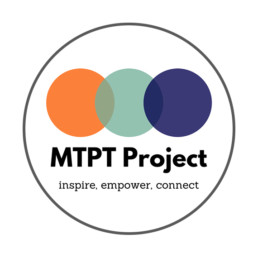
Written by The MTPT Project
The UK’s only charity for parent teachers, with a particular focus on the parental leave and return to work period.
Mothers’ Day always falls conveniently close to International Women’s Day and this year’s theme, #ChoosetoChallenge provides the perfect opportunity for The MTPT Project to showcase all the ways that our community members have challenged limiting stereotypes associated with parenthood.
Does a woman ‘leave before she leaves’, as so well explored in Sheryl Sandberg’s Lean In? Not, according to Madeleine Fresko-Brown, North London and Jewish Teachers’ Advocate for The MTPT Project. Madeleine interviewed, very obviously eight months pregnant, for her first SLT position before the birth of her first daughter, and has since stepped in and out of her role over a second maternity leave, building and sustaining effective models to secure the best leadership for her colleagues and students.
Does a woman lose all ambition when she becomes a mother? Not, according to Nadine Bernard, Head Teacher of Van Gogh Primary School, committed to coaching and mentoring aspiring principals and speaking up on the topic of exclusions and BAME leadership. Nadine returned from her third maternity leave this year and her social media accounts are an inspiring showcase of balance of personal and professional ambition.
Are all women natural, fertile earth mothers who sneeze and become pregnant? Not, as championed by The MTPT Project’s Fertility Advocate, Nicola Mooney, who speaks openly about her IVF journey, the practical logistics of trying for a family, and the ways in which schools can support teachers through this process. Or Adoption Advocate, Alex Mason who speaks candidly and confidently about adopting and her experiences of adoption leave as a parent-teacher.
Do all mothers require part-time hours in order to balance their personal and professional commitments? Not, according to Naomi Shenton, Ipswich Regional Representative for The MTPT Project who works full time as an Assistant Head Teacher, authoring chapters for the second #WomenEd book, Being 10% Braver and championing family-friendly practices in her school.
Equally, does the need to work flexibly in order to be present for our children indicate a lack of commitment or ability to fulfil leadership roles? Not, according to Liz Robinson and Nicola Noble who, for years, courageously provided an avant-garde model for co-headship, unashamedly pursuing fulfilment as school leaders and mothers, way before the recent positive trend towards flexible working.
Are all mothers the full time care-givers? Not, according to Jenny Webb, Trustee for The MTPT Project, Assistant Head Teacher, CPD provider and author of three edu-texts who regularly explains the teamwork between her and her husband who acts as the main caregiver around his own career in the arts industry.
Is our current model of parental leave inclusive and empowering of all parents? Not, according to Iesha Small only entitled to paternity leave as a Maths teacher when her wife gave birth to all three of their children, or Chris Reddy, who surprised his colleagues when he took five weeks paternity leave to be present in the early days of his sons’ lives.
At The MTPT Project, we #ChoosetoChallenge the assumptions and biases that society still attaches to the role of motherhood and parenting so that our teachers are not limited by oppressive stereotypes and disempowering systems. Instead, we encourage teachers to make choices that work for them and their families, and celebrate their successes – both at home and in the classroom.

